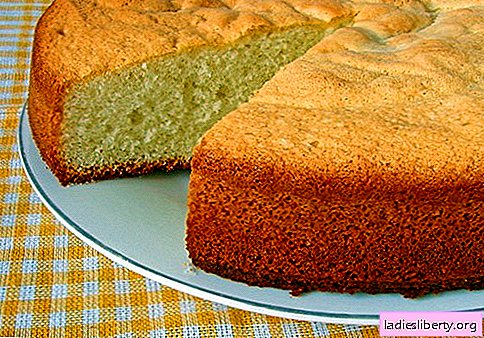
Hazel grouse is not only beautiful, but also a useful flower for the garden. It has a specific smell that scares away rodents from the beds, which protects the planting of bulbous plants. This flower adorns a flower bed with tulips, daffodils, crocuses and hyacinths. Grouse cultivation is a simple task, but planting and care must be timely.
What does a hazel grouse look like?
Hazel grouse is a perennial with an onion root-root tuber, belongs to the lily family. Grouse flowers are drooping, large, resembling bells. They are located on high peduncles, the height of which reaches up to 1.5 meters.

In the spring garden, grouse blooms one of the first, so it is often planted in rock gardens and rocky gardens. Flowering in the plant lasts up to two weeks.
Planting and growing hazel grouse (photo)
Florists plant hazel grouse because it does not require annual digging, like other bulb plants. Grouse is propagated by daughter bulbs.
Grouse breeding
The most popular type of reproduction is, as already mentioned, onion reproduction. You can still breed grouse in a seed way. But it is used extremely rarely, only for the purpose of breeding new varieties and species. Flowering of such plants occurs only at 7 years of cultivation.
The first method of reproduction is easier. Every year, an adult bulb is divided into two. If necessary, they dig and plant them.
How to plant a hazel grouse
When planting a flower on a flower bed, you should adhere to some rules:
1. Choose the right time for landing. The optimal time for planting is September-October. A later planting is undesirable, as a perennial simply will not bloom or grow.
2. Provide good illumination to the plant. It is better to plant hazel grouse in sunny areas or in places with a tenuous shadow.
3. Only healthy corms are selected for planting. Any injury will become a source of infection and pests.
4. Planting material is well disinfected, treated with a solution of potassium permanganate or charcoal.
5. Wells for landing necessarily drain well. For this, coarse-grained river sand is used. Drainage is mandatory when growing hazel grouse, because the plant does not tolerate too moist soil and stagnation of moisture at the roots.
6. Planting depth depends on the size of the bulb and the type of plant. Tall varieties are planted to a depth of three bulbs, and undersized - two.
7. Planting grouse is carried out in nutritious and fertile soil, which passes moisture and air well. With insufficient friability, sand, peat and humus are added to the soil.
8. The distance between large bulbs should be at least 20-30 cm, small ones are planted at a distance of up to 15 cm.

Advice! If it is not possible to plant purchased bulbs, then they are stored in the lower compartment of the refrigerator. Pre-bulbs are packed in paper bags filled with moistened sphagnum or peat..
Choose a bulb for planting
In order for the cultivation of grouse to bring the desired result, it is necessary not only to know the rules of planting, but also to choose the right planting material.
All care for hazel grouse begins with a choice of bulbs. They are a flat ball that has a through hole, as can be seen in the photo. The weight of such a bulb ranges from 500 g to 1 kg.

An onion suitable for planting should be healthy in appearance, that is, it should not have visible cracks, traces of disease, soft patches and other things. The presence of roots and dry residue of last year's stem is allowed, which should not be removed.
Grouse Care
It is worth remembering that the hazel grouse belongs to the lily family, therefore, they are cared for according to this principle.
• Watering is carried out as the soil dries. Even after flowering, the plant needs timely watering. It is considered optimal to water once or twice a month.
• Fertilize perennials twice a season. The first feeding is carried out at the beginning of the growing season, before flowering, somewhere in early May. The second top dressing occurs immediately after flowering. As top dressings, complex mineral fertilizers, humus, peat are used. During the flowering period, it is useful to introduce wood ash in the root zone, which will provide the plant with the necessary amount of potassium.
• After flowering, hazel grouse needs care. Already in July, the entire aboveground part is cut off.
The place where hazel grouses are grown, it should be noted that do not dig the soil and do not injure the bulbs. Next year, beautiful flowers will grow there again. As you can see, planting and caring for hazel grouse are not too complicated and can be done by a beginner grower.
Varieties and types of hazel grouse (photo)
1. Grouse imperial. The color scheme of the plant varies in red-yellow-orange tones. The blue, violet, and black varieties of the imperial hazel grouse do not exist. Peduncles high, more than 1 meter. Flowering occurs in May.

2. Chess grouse. It is distinguished by red-burgundy colors with white spots that are staggered.

3. Russian hazel grouse - the plant is listed in the Red Book. It blooms in March and April.

4. Fritillaria Mikhailovsky is a stunted variety whose height does not exceed 20 cm. The flowers are burgundy with a yellow border.

5. Persian hazel grouse is a very heat-loving variety that does not bloom in central Russia. The color of the flowers is lemon yellow. Stem height up to 1 meter.

6. Kamchatka hazel grouse. Perennial flowers in burgundy color, stem height up to 60 cm.

7. Yellow hazel grouse. His flowers have a chess pattern on a yellow background.

Diseases and problems when growing grouse
Grouse are distinguished by good immunity. With proper agricultural technology, they are practically not damaged by diseases. The only rule is to avoid planting in humid places where there is a risk of bulb decay.
If part of the bulb is still rotten, then the plant can be saved. The damaged area is cut to a healthy tissue, the section is treated with fungicide. The bulb is completely disinfected in a solution of potassium permanganate, dried and only then planted.
Grouse is an exotic plantbut pretty unpretentious. They tolerate frosts well, and early seedlings do not need shelter. However, plants absolutely do not withstand drafts and northerly winds. When planning planting grouse in the garden, it is necessary to provide them with protection.
In winter mulching need young bulbs. To do this, apply spruce branches or a layer of peat, dry leaves. In winter, the roots of the plant rise to the topsoil, so low temperatures can harm.
Spring need increased attention to seedlings. So that they do not vypryali, all the mulch is pushed back. Frosting down to -5 degrees is not terrible for the plant, but the temperature drops under the layer of mulch will harm.
When spring cleaning, they try not to touch the soil so as not to harm the roots. Loosening the earth is not necessary.
If hazel grouses do not bloom, then the reason lies not only in improper planting and care, but also in the bulb itself. Small tubers do not give flowers or their flowering is very sparse. When buying, you need to pay attention to the size of the bulb: the larger it is, the more flowers will give subsequently. The diameter of such a bulb should be more than 8 cm.











